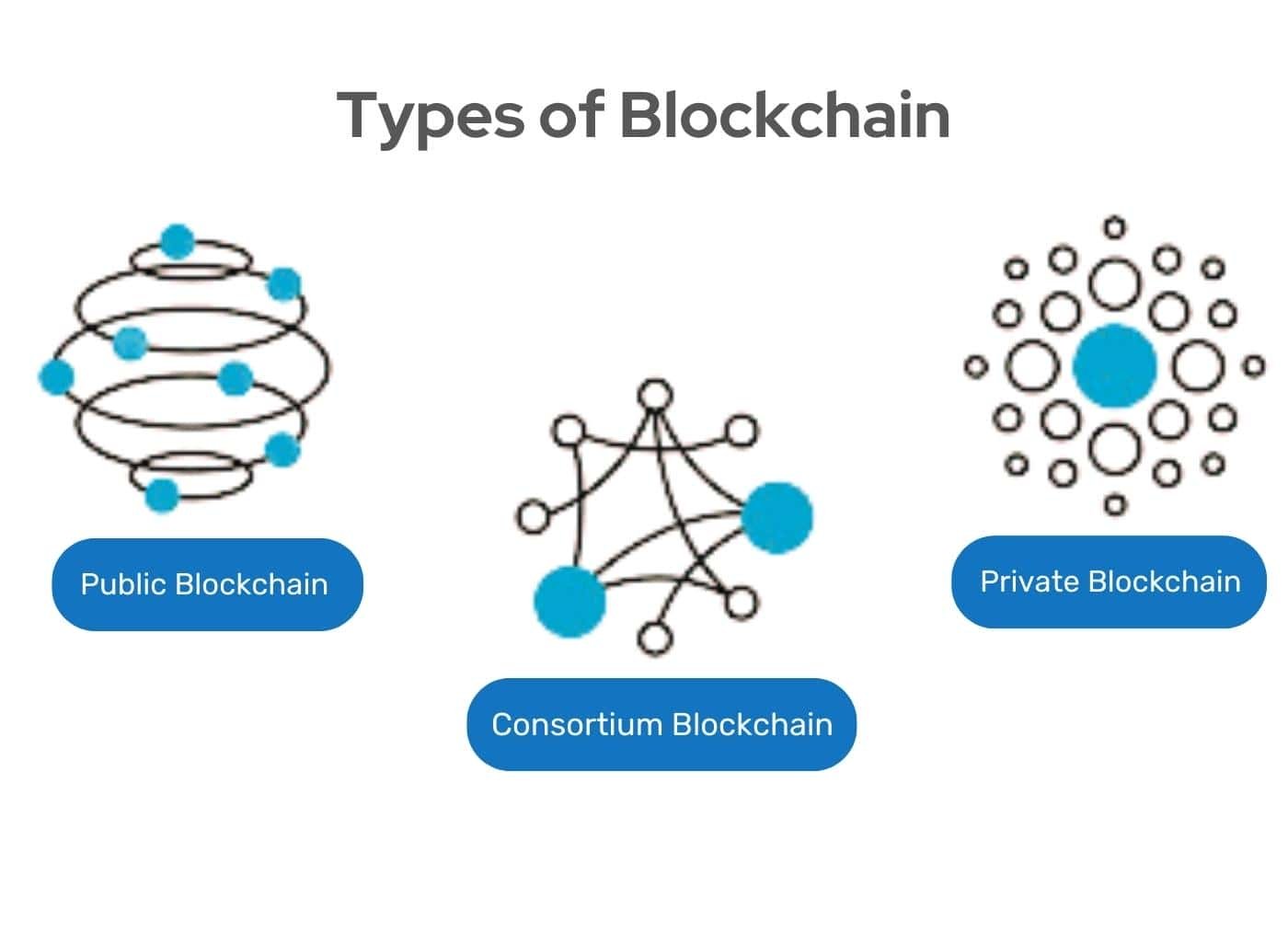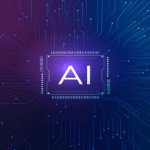Technological revolution, we are certainly witnessing a major paradigm shift today. With the new technologies paving their way into our lives and redefining the way we look at things. While the revolution began with the surge of the internet, but the two revolutionary technologies that stirred a wave of change are Blockchain and Artificial Intelligence.
While the concept of Blockchain is fairly new, the term AI or Artificial Intelligence was coined in 1955. Now, imagine a world where we have Blockchain and AI Integration. In this blog, we are going to explore this aspect closely.
What is Artificial Intelligence?
Artificial Intelligence (AI) refers to the simulation of human intelligence in machines that are programmed to think and act like humans. The primary goal of AI is to create computer systems that can perform tasks that would typically require human intelligence, such as reasoning, problem-solving, learning, understanding natural language, and adapting to new situations.
AI can be broadly categorized into two types:
- Narrow AI (Weak AI)
This type of AI is designed to perform specific tasks within a limited domain. Examples of narrow AI include virtual personal assistants like Siri or Alexa, recommendation systems used by online platforms, and algorithms used in autonomous vehicles for specific driving tasks.
- General AI (Strong AI)
General AI refers to AI systems that possess human-like intelligence and can perform any intellectual task that a human can. This level of AI remains theoretical and is yet to be achieved. General AI would have the ability to understand, learn, and apply knowledge across various domains, demonstrating true cognitive abilities.
AI encompasses various techniques, including machine learning, natural language processing, computer vision, robotics, expert systems, and neural networks. Machine learning, a subset of AI, plays a crucial role in training models to recognize patterns and make predictions based on large amounts of data.
Key Features of Artificial Intelligence:
1. Machine Learning
AI systems often employ machine learning algorithms to learn from data and improve their performance over time. They can recognize patterns, make predictions, and adapt their behavior without being explicitly programmed for each task.
2. Natural Language Processing (NLP)
NLP enables AI systems to understand, interpret, and generate human language. This feature allows AI to interact with humans through voice commands, chatbots, and language-based interfaces.
3. Computer Vision
AI’s computer vision capabilities enable it to interpret and process visual information from images and videos. This enables applications such as facial recognition, object detection, and image understanding.
4. Speech Recognition
AI can convert spoken language into text, enabling voice-controlled interfaces and virtual assistants to understand and respond to human speech.
5. Robotics
AI-powered robots can perform tasks in physical environments, ranging from simple movements to complex activities like assembly line tasks, exploration, and surgery.
6. Expert Systems
AI can be designed as expert systems, which possess specialized knowledge in specific domains and provide intelligent recommendations or solutions based on that expertise.
7. Autonomy and Decision Making
AI systems can make decisions and take actions based on the information they process and the goals they are programmed to achieve. Autonomous vehicles and drones are examples of AI systems with decision-making capabilities.
8. Deep Learning
A subset of machine learning, Deep Learning involves neural networks with multiple layers that can automatically learn representations of data, leading to more complex and abstract reasoning.
9. Planning and Problem Solving
AI can use algorithms to plan and solve complex problems, considering various constraints and optimizing outcomes.
10. Adaptability
AI systems can adapt to changing circumstances and learn from new experiences, allowing them to improve their performance over time.
11. Emotional Intelligence (Limited)
Although not yet fully achieved, researchers explore emotional AI to enable systems to recognize, understand, and respond appropriately to human emotions.
These features collectively enable AI to perform a wide range of tasks across different industries and domains, from customer service and recommendation systems to medical diagnoses, financial analysis, and much more. However, it is essential to consider the ethical implications and responsible development of AI to ensure that it benefits society positively and respects human values and rights.
As AI technology continues to advance, it has a wide range of applications in various industries, such as healthcare, finance, transportation, manufacturing, and entertainment. While AI offers numerous benefits and opportunities, it also raises ethical and societal concerns, such as job displacement, data privacy, bias in algorithms, and the potential for misuse.
With the rising concerns of AI implementation, there is a dire need to focus on responsible governance. It will ensure that AI benefits humanity positively and ethically.
Read Blog: Where AI is headed in the next 5 years?
What is Blockchain?
Blockchain is a distributed and decentralized digital ledger technology used to record and verify transactions across a network of computers. It is the underlying technology behind cryptocurrencies like Bitcoin, but its applications go beyond just digital currencies.
In a traditional centralized system, like a bank, there is a single authority (the bank) that maintains a central database to record transactions. However, in a Blockchain, there is no central authority. Instead, the data is stored in blocks, and each block contains a set of transactions. These blocks are linked together chronologically using cryptographic techniques, forming a chain of blocks, hence the name “Blockchain.”
Key Features of Blockchain:
1. Decentralization
The Blockchain is distributed across a network of computers (nodes) where each node has a copy of the entire Blockchain. This decentralization ensures that no single entity has complete control over the data or the network.
2. Transparency
Once a transaction is recorded on the Blockchain, it becomes visible to all participants on the network. This transparency ensures that all parties can verify and audit the transactions without the need for a central authority.
3. Immutability
Once a block is added to the Blockchain, it is very difficult to alter or delete the data within that block. Each block contains a unique cryptographic hash of the previous block, creating a chain of linked blocks. Any change to a block would require changing all subsequent blocks, making it computationally infeasible and ensuring the security and integrity of the data.
4. Security
Blockchain uses advanced cryptographic techniques to secure transactions and prevent unauthorized changes or fraud. Consensus algorithms are used to validate and agree on the state of the Blockchain across the network.
5. Smart Contracts
Smart contracts are self-executing contracts with the terms of the agreement written directly into lines of code. They can automatically execute when predefined conditions are met, enabling automated and trustless interactions between parties.
Blockchain technology has a wide range of applications beyond cryptocurrencies, including supply chain management, voting systems, identity verification, healthcare record management, and more. Its decentralized nature and robust security features make it an attractive solution for various industries seeking to enhance transparency, security, and efficiency in their operations.
Types of Blockchain:
There are mainly three types of Blockchains based on their accessibility and control:
Public Blockchain:
This type of Blockchain is open to the public, and anyone can participate in the network as a node. Public Blockchains, like Bitcoin and Ethereum, are permissionless, meaning there are no restrictions on who can join the network, read the data, or participate in the validation process (mining).
They rely on consensus mechanisms, such as Proof of Work (PoW) or Proof of Stake (PoS), to validate and add new blocks to the chain. Public Blockchains offer high security and decentralization but may have slower transaction speeds due to the large number of participants.
Private Blockchain:
Private Blockchains, as the name suggests, are restricted and accessible only to specific users or organizations. These Blockchains are permissioned, meaning that participants need authorization to join the network, access data, and participate in consensus.
Private Blockchains are often used by enterprises or organizations for internal purposes, where they require a higher level of control over the network. They can provide faster transaction speeds compared to Public Blockchains but sacrifice some decentralization.
Consortium Blockchain:
Consortium Blockchains are a hybrid between public and private Blockchains. They are semi-decentralized and are controlled by a group of pre-selected nodes or organizations. In a consortium Blockchain, a limited number of nodes are responsible for validating and adding new blocks to the chain.
These nodes are usually trusted entities, and the consensus mechanisms used can vary depending on the specific use case. Consortium Blockchains are suitable for scenarios where a group of organizations collaborates on specific projects and requires shared control over the Blockchain network.
Each type of Blockchain has its advantages and disadvantages, and the choice of Blockchain type depends on the specific requirements and use cases of the application. Public Blockchains offer high security and transparency but may be slower and less suitable for certain enterprise applications.
On the other hand, private and consortium Blockchains provide more control and faster transaction speeds but may sacrifice some aspects of decentralization and transparency.
Examples of Blockchain and AI:
Top AI Blockchain projects are highlighted below:
1. SingularityNET (AGI)
It is a decentralized AI platform that aims to democratize AI services by providing a marketplace for AI algorithms and agents to interact, collaborate, and monetize their capabilities.
2. Fetch.ai (FET)
An AI-powered Blockchain network that enables smart autonomous agents to perform tasks, facilitate data sharing, and support various decentralized applications.
3. Ocean Protocol (OCEAN)
A decentralized data exchange protocol that uses Blockchain and AI to enable secure sharing and monetization of data while preserving privacy.
4. Numerai (NMR)
A crowd-sourced hedge fund that utilizes Blockchain and AI to incentivize data scientists to build predictive models on encrypted data, allowing them to compete for rewards.
5. Cortex (CTXC)
A Blockchain platform that combines AI and smart contracts to support the creation and deployment of AI models, enabling decentralized AI applications.
6. SingularityDAO (SDAO)
A decentralized autonomous organization (DAO) focused on AI-powered financial strategies and DeFi (Decentralized Finance) protocols.
7. Endor Protocol (EDR)
A predictive analytics platform that allows businesses to access AI-powered insights without exposing raw data, thanks to Blockchain-based privacy solutions.
8. Effect.ai (EFX)
A decentralized AI platform that connects businesses and developers, offering services for AI training and data processing.
9. Cindicator (CND)
A hybrid intelligence platform that combines AI and human analysts to provide market predictions and investment insights.
These projects were at the forefront of integrating AI and Blockchain technology, and they demonstrated the potential of this combination in various sectors, including data sharing, finance, AI development, and prediction markets.
Use Cases for Blockchain and AI:
1. Supply Chain Management
Combining Blockchain and AI can revolutionize supply chain tracking and transparency. Blockchain’s immutable ledger ensures secure and tamper-proof recording of every transaction and movement of goods, while AI can analyze the data to optimize logistics, predict demand, and identify potential inefficiencies, leading to enhanced inventory management and reduced costs.
2. Healthcare
Integrating Blockchain and AI can secure sensitive patient data while enabling interoperability among various healthcare providers. AI-powered medical diagnosis and personalized treatment plans can be securely stored on the Blockchain, allowing patients to maintain control over their health records and granting AI algorithms access for improved diagnostics and treatment recommendations.
3. Financial Services
AI can analyze vast financial data sets to detect patterns and predict market trends, while Blockchain ensures transparent and secure transactions. This combination enhances fraud detection, risk assessment, and automated trading strategies, fostering more efficient and trustworthy financial systems.
4. Decentralized AI Networks
AI algorithms can be distributed across a Blockchain network, enabling decentralized AI processing and decision-making. This approach not only improves scalability but also safeguards against single points of failure, censorship, and unauthorized access.
5. Identity Management
Blockchain’s decentralized identity systems, combined with AI’s biometric and behavioral analysis, can enhance identity verification processes. Users can control their identity information securely, allowing selective sharing of data with trusted parties, minimizing the risk of identity theft.
6. Internet of Things (IoT)
AI can analyze data generated by IoT devices, and Blockchain can securely store this data, ensuring its integrity and authenticity. This synergy creates reliable and transparent data ecosystems for IoT applications, enabling autonomous decision-making and efficient device coordination.
7. Intellectual Property Rights
Blockchain’s immutability can help establish a verifiable and time-stamped record of intellectual property creations. AI can be utilized to monitor and identify potential copyright violations, protecting the rights of creators and enabling fair compensation for their work.
8. Energy Management
AI-driven predictive analytics can optimize energy consumption patterns, while Blockchain facilitates transparent peer-to-peer energy trading. This synergy empowers individuals and organizations to participate in renewable energy markets efficiently.
9. Gaming and Entertainment
Blockchain can enable secure ownership and trade of in-game assets, while AI can enhance game dynamics and provide personalized gaming experiences based on players’ behavior and preferences.
The combination of Blockchain and AI presents a wide range of transformative use cases across industries, from improving data security and transparency to optimizing decision-making processes and creating more efficient and trustworthy systems.
How Blockchain and AI Work Together?
AI and Blockchain are two cutting-edge technologies that, when combined, can offer powerful solutions across various industries. Here’s how they can work together:
-
Enhanced Data Security
Blockchain is renowned for its robust security features, ensuring immutability and transparency of data. AI can be employed to detect potential cyber threats and vulnerabilities, and its predictive capabilities can help anticipate attacks or unauthorized access attempts. By integrating AI with Blockchain, data stored on the chain can be further safeguarded, making it an ideal solution for secure storage and sharing of sensitive information.
-
Smart Contracts
Blockchain enables the creation of smart contracts, which are self-executing agreements with predefined conditions. AI can be used to analyze complex contract terms and conditions, ensuring accuracy and verifying their execution. This can lead to automated contract management, reducing human errors and minimizing the need for intermediaries.
-
Decentralized AI
AI models can be resource-intensive, requiring significant computing power and storage. By leveraging Blockchain’s decentralized nature, AI algorithms can be distributed across a network of nodes, allowing for more efficient processing and scalability. Additionally, this decentralized approach can protect AI models from single points of failure and censorship.
-
Data Marketplace and Data Privacy
Blockchain facilitates secure data sharing among multiple parties. AI can analyze this data and provide valuable insights. Companies or individuals can use smart contracts to set terms for data access and usage. Users can retain control of their data, granting permission to specific AI Algorithms for analysis while keeping their identity and sensitive information private.
-
AI in Supply Chain and Logistics
Blockchain can be used to track and verify the authenticity of goods in a supply chain. AI can complement this by analyzing data from various stages of the supply chain to optimize processes, predict demand, and enhance inventory management.
-
Personalized AI Services
Blockchain can store encrypted user data and preferences securely. AI algorithms can access this data to provide personalized services and recommendations without compromising the user’s privacy.
-
AI-Driven Consensus Mechanisms
In some Blockchain networks, consensus mechanisms determine the validity of transactions and blocks. AI can be employed to enhance consensus algorithms, making them more adaptive and efficient based on network conditions and demands.
-
AI-Enhanced Identity Management
Blockchain can be utilized for decentralized identity management, and AI can add an extra layer of verification to ensure the authenticity of users and their activities.
-
AI-Powered Smart Tokens
Smart tokens on the Blockchain can be equipped with AI capabilities, enabling them to make automated decisions based on predefined rules and conditions.
By combining AI and Blockchain, we can create a symbiotic relationship that leverages the strengths of both technologies to drive innovation and solve complex problems across various domains.
Artificial Intelligence, Blockchain and the Platforms of the future
Artificial Intelligence, Blockchain in all the technologies of the future. While AI will be transforming the way machines operate mimicking human behaviour and intelligence, Blockchain can provide a decentralised framework for operation enhancing its security. This will make the systems more efficient and effective.
FAQ
How Can Blockchain Developers Use AI?
Blockchain developers can harness AI to enhance various aspects of Blockchain technology. They can utilize AI for enhanced data security through threat detection and predictive analysis. AI can optimize smart contract creation and execution by analyzing complex conditions.
Additionally, AI can aid in creating decentralized AI networks, improving scalability and efficiency. AI-driven data analysis can support supply chain management and personalized services while preserving user privacy.
Furthermore, AI can augment consensus mechanisms, optimize identity management, and empower smart tokens. By integrating AI into Blockchain development, developers can unlock new possibilities, improve user experiences, and create innovative solutions across industries.
Why is AI and Blockchain a Good Combination?
AI and Blockchain complement each other perfectly, offering a potent synergy of strengths. Blockchain ensures secure, tamper-proof data storage and transparent transactions, while AI excels in analyzing vast datasets, predicting trends, and making intelligent decisions.
Together, they enhance data security, privacy, and trust in various applications, such as supply chain management, personalized services, and decentralized identity verification.
AI-driven smart contracts automate processes, reducing inefficiencies and human errors. Blockchain’s decentralization supports AI’s scalability and resilience, creating a powerful foundation for innovative solutions across industries. This combination fosters cutting-edge advancements, revolutionizing businesses and technologies while paving the way for a more efficient and intelligent future.
Which Crypto is Related to AI?
One notable cryptocurrency related to AI is “SingularityNET” (AGI). SingularityNET is a decentralized platform built on Blockchain technology that aims to facilitate the creation, sharing, and monetization of AI services and algorithms. It provides a marketplace for various AI agents to interact, collaborate, and offer their capabilities to developers and users.
SingularityNET seeks to democratize AI by allowing AI developers from around the world to contribute their creations and enabling anyone to access and utilize sophisticated AI tools without relying on centralized entities. AGI is the native utility token of the SingularityNET platform and is used for various transactions and interactions within the ecosystem.
Read Blog: How to become an AI Architect?
Conclusion
This brief overview on the Blockchain and AI Integration clearly highlights that these technologies are going to be on the forefront of major changes taking place in the industry. Any individual who wishes to be successful and professionally needs to upskill and master Blockchain and AI. Having expertise in these skill sets will pave the way for professional success.













